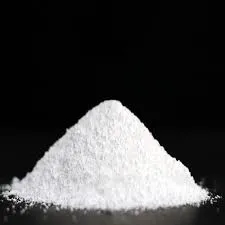Exploring Sulfamic Crystals Properties, Uses, and Safety
Sulfamic acid, also known as amidosulfonic acid, is a unique inorganic compound that has gained attention for its versatile applications in various industries. Its crystalline form, sulfamic crystals, is particularly valued for its high purity and effectiveness in several practical uses. This article explores the properties, applications, and safety considerations associated with sulfamic crystals.
Chemical Structure and Properties
Sulfamic acid is a sulfonic acid derivative characterized by the presence of an amine group, which distinguishes it from other common acids. Its chemical formula is H3NSO3, and it crystallizes in white, odorless crystals. With a melting point of approximately 205 °C (401 °F) and high solubility in water, sulfamic crystals are often utilized in both solid and dissolved forms.
One of the notable properties of sulfamic acid is its stability. Unlike other strong acids, sulfamic acid does not release corrosive gases when heated, making it a safer alternative in certain chemical processes. Additionally, it exhibits a low toxicity profile, which is a significant advantage in applications where human contact is likely.
Applications of Sulfamic Crystals
1. Cleaning Agents One of the most widespread uses of sulfamic crystals is in the formulation of cleaning agents. Their ability to dissolve mineral deposits, rust, and other inorganic contaminants makes them ideal for descaling agents. This property is exploited in products meant for cleaning boilers, heat exchangers, and various industrial equipment.
2. pH Control Sulfamic acid is also utilized in the control of pH levels in various chemical processes. It can be used to neutralize alkaline substances, effectively adjusting the acidity of solutions in industrial applications such as metal finishing and wastewater treatment.
sulfamic crystals

3. Electroplating In the electroplating industry, sulfamic acid is employed to stabilize nickel solutions. This stabilization is essential for maintaining the quality and consistency of the electroplating process, ensuring that the deposited metal layer is even and free from defects.
4. Synthesis of Chemicals Sulfamic acid serves as a reagent in chemical synthesis. It is used in the production of various nitrogen-containing compounds and is a crucial component in the manufacturing of herbicides, dyes, and pharmaceuticals.
5. Food Industry Interestingly, sulfamic acid is sometimes used in the food industry as a food preservative and acidity regulator. Its application in this sector is strictly regulated to ensure safety.
Safety and Handling
While sulfamic crystals are relatively safe compared to other acids, handling them still requires caution. Protective measures include wearing gloves, goggles, and masks to prevent skin and eye contact, as well as inhalation of dust particles. In case of exposure, it is vital to follow appropriate first aid procedures, which typically involve flushing affected areas with water and seeking medical attention if necessary.
Proper storage is also crucial to maintain the integrity of sulfamic crystals. They should be kept in a cool, dry place, away from incompatible materials such as strong oxidizers. Labeling containers and ensuring proper ventilation in storage areas are essential to prevent accidents.
Conclusion
Sulfamic crystals present a remarkable combination of safety, stability, and versatility, making them an invaluable asset across various industries. From cleaning and descaling agents to their role in chemical synthesis and pH control, the applications of sulfamic acid continue to expand. As industries increasingly prioritize safety and environmental considerations, the use of sulfamic crystals is likely to grow, solidifying their place in modern chemistry. Overall, understanding the properties and applications of sulfamic crystals is vital for harnessing their full potential while ensuring safe handling and use.

